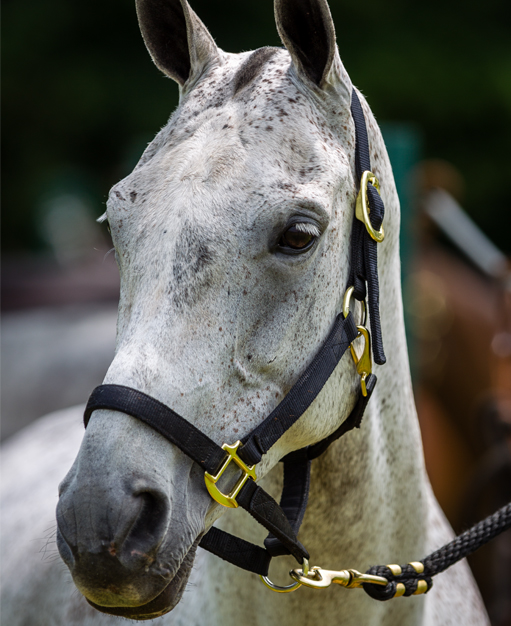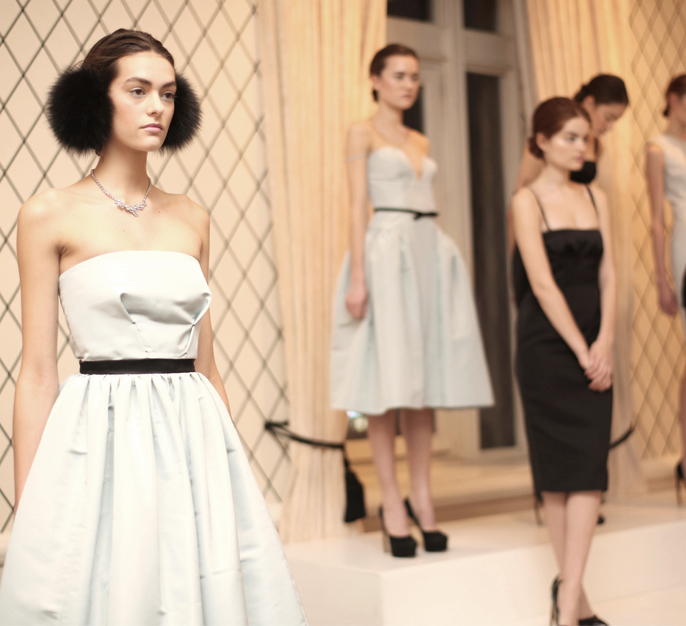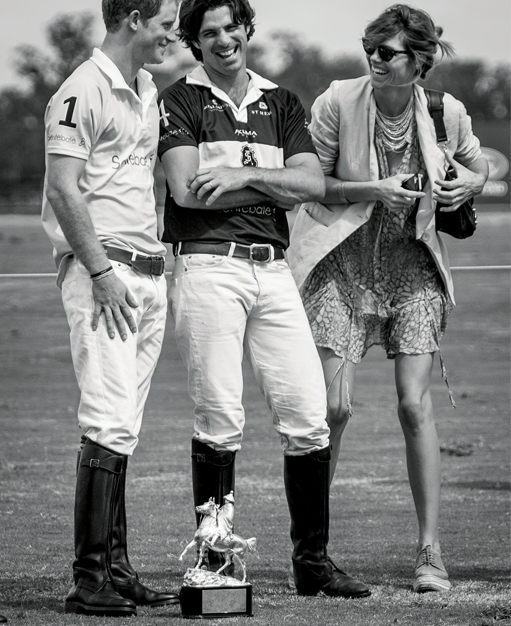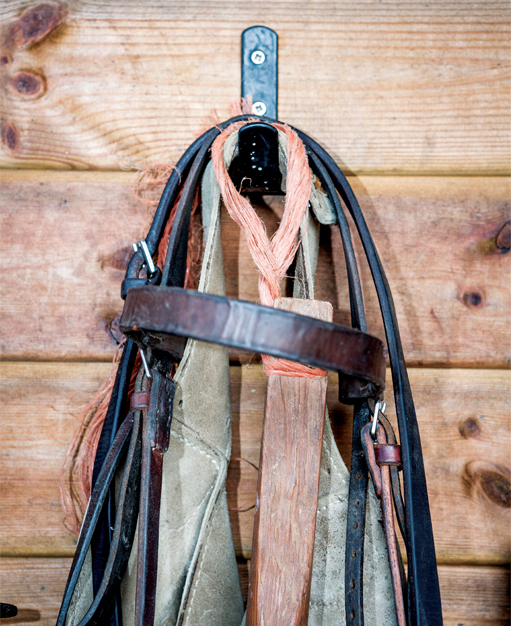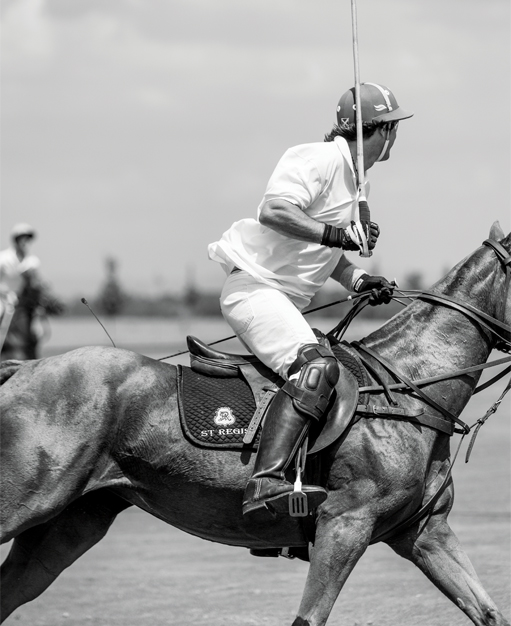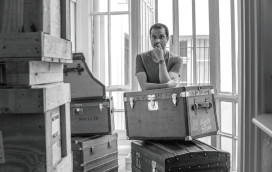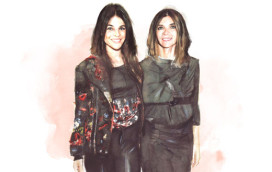I tell you what I like about polo: it attracts an interesting bunch of people, and few more so than Porfirio Rubirosa. Rubi was the playboy’s playboy. With his magnificent physique, the five-times-married Rubi pulled off the unusual double of counting among his spouses two of the richest women in the world: Barbara Hutton and Doris Duke. But, as well as being a ladies’ man, Rubi was a man’s man, too. It is rather fitting that he died at the wheel of a Ferrari after a long night celebrating the victory of his Cibao La Rampa polo team over Baron Elie de Rothschild’s team at the Bagatelle polo club in Paris. It may sound rather ghoulish, but it is my favourite polo story because it sums up what the sport is about (or at least what I think it should be about): dashing Latin-American lotharios careering around on horses, partying until dawn, seducing women and driving sports cars.
Polo just can’t help itself. Whether as racy fiction, as in Polo, by the British author Jilly Cooper (a classic, even among those who have not read it), or with the backing of a global apparel brand such as Ralph Lauren, a distinctive jeweler such as Cartier, or an elegant hotel group such as St. Regis, polo sells. Or rather, the idea of polo sells: the quivering, sweat-flecked, athletic bodies; the thunderous drumming of the hooves; the crisp crack as the head of a stick connects with the ball. All are as irresistible today as they were in Rubi’s day. Or even before that, in the latter half of the 19th century, when the game made the seismic cultural shift from being the rough-and-tumble pastime of military and nobility from Persia to China since the 5th century BC to the preferred sport of the British Army in India.
The game had made its way to England by the 1870s, where within a very few years it had caught on as another of the attainments upon which the Corinthian gentleman prided himself, combining courage, quick thinking, exigent hand-eye coordination, horsemanship and finances. By the early years of the 20th century, almost as a metaphor for the transfer of power from Old World to New, American society, and Harry Payne Whitney in particular, had taken command of the sport by developing a fast game of long shots played using a specially bred type of pony. Today, it’s played at more than 250 American clubs, from International Polo Club Palm Beach, where the US Open is held, to Santa Barbara Polo Club, host of the Pacific Coast Open. Although the game’s origins are in the northern hemisphere, today its center of gravity has shifted to the southern, its calendar following the sun. Having opened the season in England in April, the players travel through Europe and America, arriving in Argentina in November for its Open Championship, before dispersing around the world to Florida or Australia or South Africa. The game also has a way of following the money. Just as it moved from England to America in the past century, so the game has shifted to a host of new destinations in the past couple of decades.
Today, it is played in more than 77 countries (although professionally in only 16), including those in the Middle East, such as the U.A.E., Bahrain and Jordan, as well as East Asia, where there are clubs in countries ranging from Singapore and Thailand to China. The latter now has two clubs, founded in the past decade. These days, of course, it is all a rather more serious affair than it was in Rubi’s day – and slightly more expensive. Rubi was lucky; his wives kept showering him with presents, including strings of polo ponies. But today if you want to play polo and you aren’t Argentine and weren’t born in the saddle, forget it. That is, unless you happen to have a few million burning a hole in the back pocket of your riding breeches, in which case you can become a patron and surround yourself with people who really know what they are doing (professional players, who are ranked according to handicap, with ten-goal players being the best).
There is a third way you can get involved with the sport: as a business. The demographic and the glamor of polo slots in perfectly to the marketing strategy of most of the companies offering the better things in life, and increasingly, top polo players are attracting sponsorship from luxury brands, particularly watch companies. For instance the ten-goal player and respected breeder Pablo Mac Donough, who was part of the Cartier Queen’s Cup winning side in Windsor, England, last year, is linked to the avant-garde watchmaker Richard Mille. Cartier is the king of polo sponsorship, linking the world of luxury goods with the sport of kings. And much of Jaeger-LeCoultre’s success has been built on the reputation of the Reverso: a watch that was developed during the Art Deco period to be flipped over on the wrist so as to protect the face from stray balls, hooves and sticks. Over the years, the latter watchmaker has become increasingly involved in the sport, sponsoring polo fans such as Clare Milford Haven, who has worked closely with St. Regis in the past. Her Great Trippetts Farm polo yard near Cowdray Park in West Sussex has become a home away from home for players and their ponies in England in the summer. Trippetts is an impressive operation. Such is the condition of the horses’ coats that they look as though they have been to the hairdressers. And Milford Haven’s candlelit suppers in the middle of the stable yard, the soft light reflected in silver trophies the length of the table, are enough to convert even the most equine-phobic guests into polo addicts. Lady Milford Haven, the former social editor of Tatler, exemplifies how completely polo can take over your life. “I never actually thought I could play polo,” she confides over dinner. “I thought it was very much a man’s sport, and that it was going to be way beyond my capabilities. But I just fell in love with it and the challenge of it. I love the people involved. I thought they were going to be very superficial, but in fact they’re very down-to-earth, fun, like-minded people.”
Having talked to other polo-playing friends and their spouses (including Clare’s husband, the Marquess of Milford Haven, who was once a two-goal player), I have come to the conclusion that there are two separate games of polo that exist in parallel. On one side there is the athletic, demanding, engrossing business of playing the game. And then there is the glamorous side that you see when you go to a big game at Greenwich Polo Club, Connecticut, where last summer some of the greatest players in the world, such as Nacho Figueras (see our interview overleaf), played against British royalty in the name of Prince Harry’s charity, Sentebale. Games such as this, says Milford Haven, are “the culmination of weeks of playing very hard, competitive games. But in the end, the match is all about people dressing up and having a day out. It is all just about having fun, which is great.” For my part I am all for the hard work, training, practice matches and injuries, just as long as someone else is doing it. I really don’t need to know one end of the horse from another. It is more than enough for me to know that both ends are dangerous. And, what’s more, I have it on good authority that the middle is far from comfortable.
Nacho Figueras – A Life in the Saddle
The Argentinian star and St. Regis Connoisseur on polo, ponies and playing chukkas with Prince Harry of Wales. Interview by Charlotte Hogarth-Jones.
Ignacio “Nacho” Figueras, 36, is widely recognized as the international face of polo. Currently captain of the Black Watch team, he started playing at the age of 9 on his family’s farm in Argentina, and now plays all over the world.
What do you love most about polo?
The horses. I’ve always loved the sport, but as the years go by it is the horses that I’m getting more passionate about. Nine years ago I started learning about bloodlines, nutrition and training. I’ve found that it makes the relationship you have with a horse much more rewarding. When I was 14, I’d just pick a horse and say, “Let’s go.” Now when I get on a chestnut mare I know her mother, her father; I saw her being trained, and I saw her being broken. It makes a big difference.
How often do you train?
Knowing exactly how a horse is going to feel gives you a real advantage, so I try to ride as much as I can. In between practice I’ll take a couple of horses out for two or three hours, and if I’m not on a horse then I’m still in the stables or I’m thinking about them.
What do you think about when you are on the field?
When you first go out to play you don’t think much about the horse, you feel so in sync with them that horse and player are one. Team-wise, too, you will have discussed with your team-mates how you’re going to play, and you know them well enough that you don’t worry about that. When there’s chemistry within a team it’s really great, and it shows. The main thing is keeping concentration. It is easy to lose focus and start looking at the ball, the crowd and other things that you’re not supposed to be looking at. I’ve even seen people score in the wrong goal. Hopefully you know enough about the team that you’re playing, and you have a strategy so it’s just about staying focused and remembering what the plan was. It should be working and, if it’s not, it is time to go back to the tent and change tactics.
How do you feel about the social side to polo?
You do socialise a lot at the polo, as you do at every other sport. In the States, I have been to many of those VIP boxes where people are talking all the time, working and making contacts, and that is fine. At the end of the day, there will always be some games that keep you on the edge of your seat and some that don’t.
This summer you played with Prince Harry of Wales for his charity, Sentebale. Is he a good player?
Yes, he’s very competitive and he’s been riding all his life, his grandfather played, his father played… Polo isn’t what he does for a living, but he’s a great rider, he’s fun to play with and he uses the game as a platform for charity, which I think is great. It’s a real honor for me to be by his side.
How did your relationship with St. Regis come about?
The original founders of the first St. Regis hotel in New York, Mr. and Mrs. Astor, were very into their polo. They would go to matches and host polo players at their hotel. Since then the brand has continued to support polo around the world, which I’m very passionate about. For me it’s been a very organic relationship. I don’t feel as though they’re pushing me to support something that I’m not associated with, and of course, it’s good to have so many places to stay in around the world.
How do you see polo expanding globally?
There’s a lot of development of the sport in China, and there’s a big polo explosion in the UAE. I think it’s really picking up in many other places around the world, too. It’s getting more attention and more spectators, and it’s going back to the way it was in its heyday. Now is such an exciting time for polo.
In his role as St. Regis Connoisseur of Speed and Sport Nacho Figueras has worked with the brand to develop an exclusive polo website, featuring a global calendar of polo events, closely linked to the St. Regis Aficionado program designed to provide once-in-a-lifetime experiences around the world.
